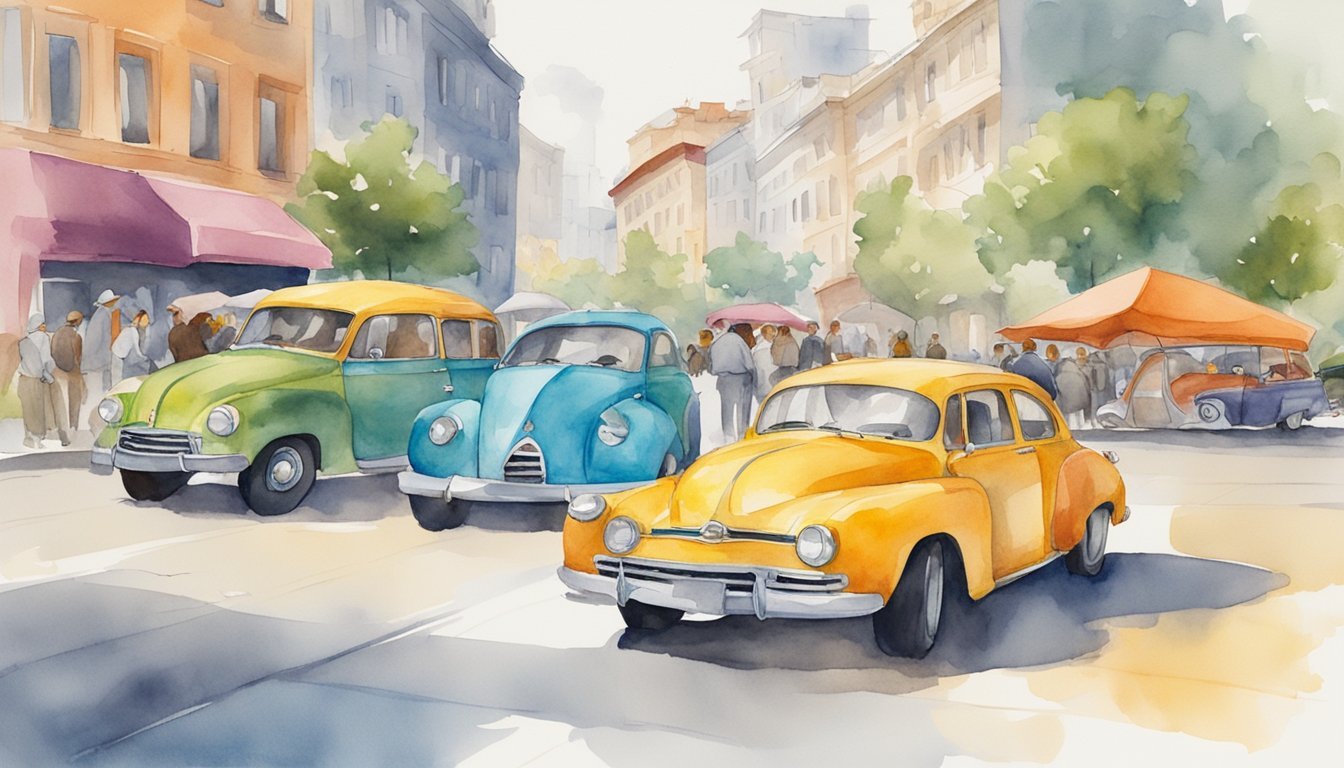Goofy Car Concepts and History
Evolution of Goofy Cars
The journey of goofy cars began in the early 20th century, with many automakers experimenting with unique and unusual designs. One of the first unconventional automobiles was the Stout Scarab, designed in the 1930s. This unique vehicle featured a streamlined body, a rear-mounted engine, and a spacious interior, resembling a giant beetle.
Over the years, the world has seen many eccentric car designs such as the DeLorean DMC-12, made famous in the movie “Back to the Future.” Designed as a futuristic sports car in the 1980s, it featured stainless steel body panels and gull-wing doors, making it an iconic goofy car in pop culture. Another example is the Fiat Multipla, which became notorious for its odd face-like front end and narrow headlights.
Iconic Goofy Cars in Pop Culture
Goofy cars have made their way into our hearts through movies, cartoons, and other forms of media. For instance, in 1950, Walt Disney released a cartoon called “Motor Mania,” featuring Mr. Wheeler and Mr. Walker. The animated film humorously portrayed the behavioral transformation of people behind the wheel, showcasing wacky vehicles and chaotic traffic situations.
Another unforgettable goofy car from pop culture is the Lincoln-Zephyr convertible from the movie “101 Dalmatians.” The vehicle’s exaggerated curvy design and elongated front end made it a memorable character in the classic Disney film.
Goofy cars continue to evoke fascination and amusement with their innovative appearances and function, pushing the boundaries of automotive design. Whether it’s through historical significance or pop culture references, these eccentric vehicles have left a lasting impression on the automotive world.
Modern Goofy Cars and Their Impact

Electric Goofy Vehicles
The shift towards electric vehicles and AI technology has brought some interesting designs. One example is the Google Car, which appears to have taken inspiration from a happy cartoon character. These electric goofy cars tend to have unique features, such as unusual headlights or unconventional body shapes. Some examples include the three-wheeled BMW i8 and the Nissan Cube Krom, which both appear animated and undoubtedly stand out.
As the world continues to tackle climate change, governments are encouraging the use of electric vehicles to reduce emissions. During the pandemic, a noticeable drop in emissions was observed in multiple countries including the United States and the United Kingdom. Though these cars may seem “goofy,” their electric variations contribute to a greener environment.
Goofy Cars in Today’s Traffic
Goofy designs are not limited to electric vehicles. In the past, funny cars with odd shapes have also played their part in pop culture. Disney’s “Motor Mania” featuring Goofy as a driver showcases how these distinctive vehicles have been depicted onscreen. Today, we see humorous vehicles like motorcycles with wider front grills or cars with front “faces” that appear to be smiling or frowning.
In cities such as London, these goofy cars can be easily spotted amidst heavy traffic. They may not have the top speed or range of conventional vehicles, but they certainly add personality to the streets. The unique aspect of these vehicles is that it’s not just about aesthetics – the bizarre designs can provoke thought and even inspire new inventions.
So while goofy cars may initially be perceived as laughs on the road, they have a deeper impact in today’s automobile industry and environmental efforts.

